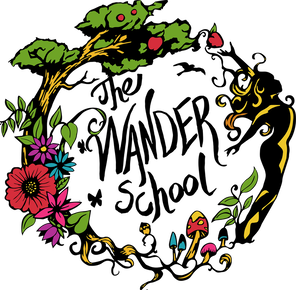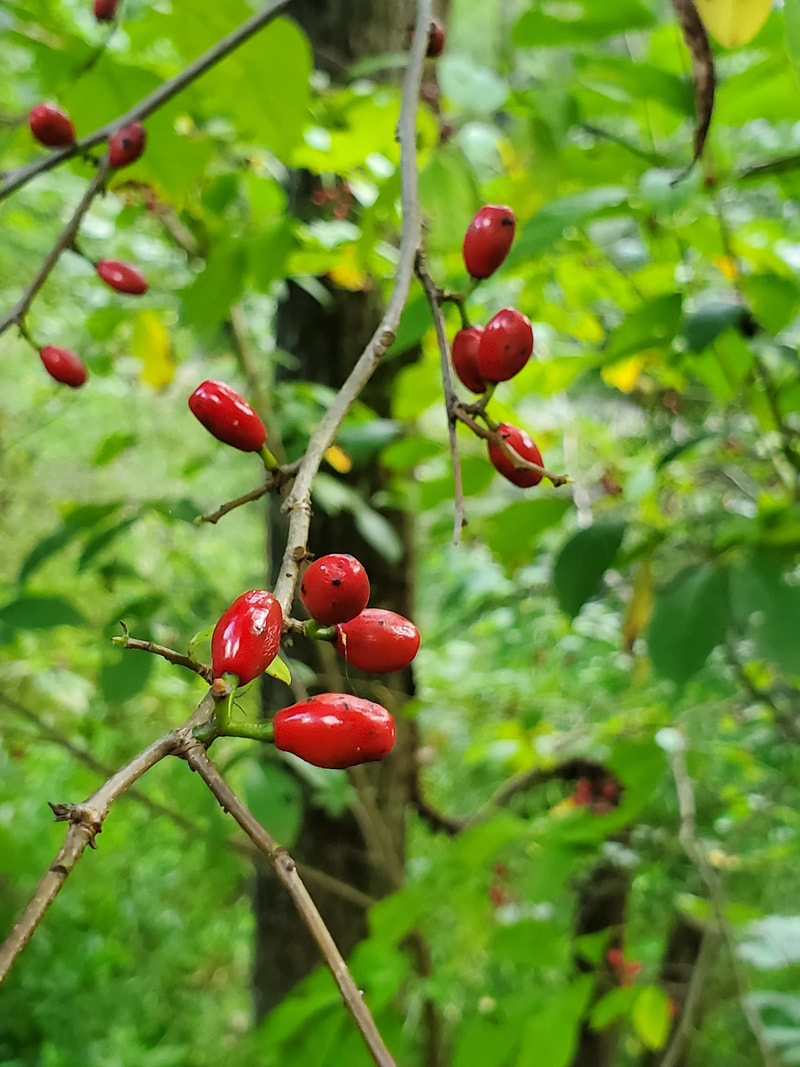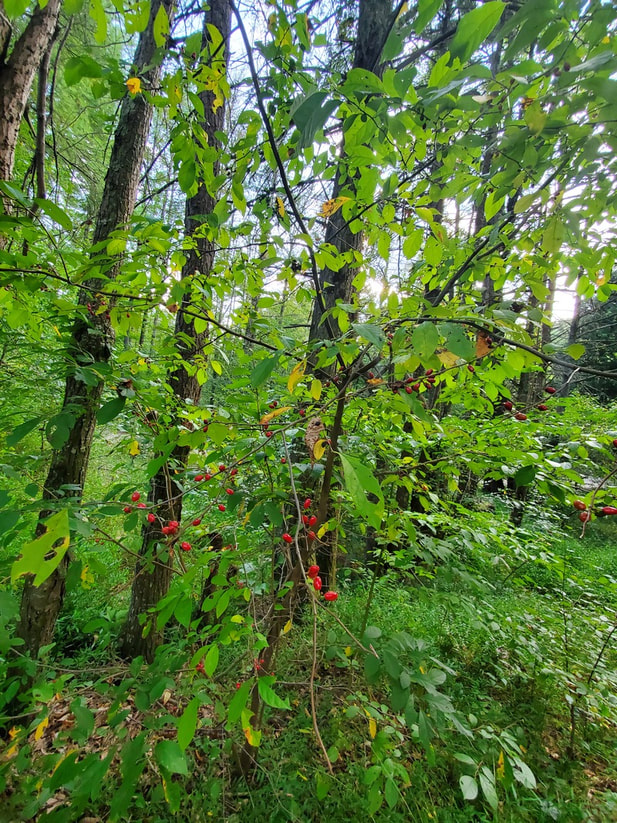|
Tis the season . . . for spicy lattes! As the temps drop and a chill fills the air, there's nothing better than a cozy sweater, a bowl of nourishing soup and a warming beverage. Why have a pumpkin spice latte, filled with tons of sugar and who knows what in the ingredients list, when you can create your own tastier, foraged latte with a much cooler name and health-supporting ingredients practically for free? I call the fire engine red berries of the Spicebush (Lindera benzoin), "spiceberries," mostly cuz it sounds cool. They are easy to harvest, if you can find them at exactly the right time (that bright red is important), right around the autumn equinox (now) in Appalachia. Though it can take awhile to harvest plenty, because they're small. The most important point of processing them, is to do it quickly! They have a lot of volatile oils, meaning they go rancid super fast. It's hard to dry them enough without a dehydrator, but you could try it in an oven on the lowest setting. Dry them until they are dark red to black, feel completely dry all the way through, and you can bite through them easily. They should taste like allspice, which they were substituted for way back in the day when the spice trade was difficult. Though I'm sure native folks were aware of them much before that. Here's my recipe for Spiceberry Spice: Be aware that the taste of spice berries is strong. Some people are more sensitive to it than others. Start with a smaller amount first, if you wish. Also, feel free to change the amounts of any of the other spices to your personal taste. Ingredients 2 Tbsp* powdered spicebush berries 2 tsp powdered cloves 2 tsp powdered nutmeg 2 tsp powdered cinnamon 2 tsp powdered ginger Simply mix together and pour into a spice jar with a shaker lid. It seems spiceberries go rancid faster once they are powdered, so I usually don't make any bigger batches than this for personal use. I'll let ya in on the secret of how I make my lattes. Be aware, every forager I know, including myself, is a foodie!
This is also an awesome spice for roasted squash or pumpkin/squash soup. Let me know what you think in the comments below! Other fun things to do with spicebush:
Wanna learn more about spicebush? Check out my friend and co-founder of our Sassafras Appalachian School of Plantcraft (2020 applications now being accepted, hint hint) Becky Beyer's blog all about it (on her website, Blood and Spicebush). Then, go harvest some yourself, of course making sure you have 100% positive ID, or get someone like me to show you. Other cool tidbits about spicebush:
Happy Foraging!
3 Comments
|
Want to help us continue to do this important work |





 RSS Feed
RSS Feed